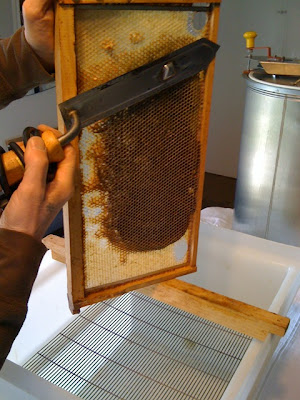
My good friend Serge Madikians, owner of Serevan Restaurant in Amenia, New York, makes an amazing Moroccan Chicken with Preserved Lemons and Olives that is on the top of my to cook list.
Check him out on Live From Daryl’s House.com, Episode 21, where he creates this dish for the Plain White T's.
Of course, the first step is to get some of my own preserved lemons put aside. There are many variations of this recipe as presed lemons are popular in North Africa, the Middle East, and Ind
DIRECTIONS
Place 2 Tablespoons Salt into the bottom of the sterilized jar.
Once lemons are washed and well dried, prepare them one at a time as follows: Cut off the tip and bottom of each lemon, just down to the fruit.
Cut the lemons as if you were going halve them lengthwise, but do not complete the cut. Keep the lemon attached at the base. Make another cut the same way, so the lemon is quartered, but attached at the base.
Cut the lemons as if you were going halve them lengthwise, but do not complete the cut. Keep the lemon attached at the base. Make another cut the same way, so the lemon is quartered, but attached at the base.
Hold lemon over canning jar, gently open the lemon and generously sprinkle salt all over the insides, use at least one tablespoon. Do not worry if extra salt falls into jar.

Pack the lemons in the jar, pushing them down so that juice runs. Fill the jar with lemons in this manner. Add more fresh squeezed lemon juice as needed to cover lemons.
Preserved lemons can be stored in the refrigerator for up to a year, but you will probably use them up long before that.
To use the preserved lemons, remove rind from jar, remove pulp from rind, wash the rind and chop into small pieces, or as directed by individual recipe. Some people use the pulp for flavorings in soups and sauces.









